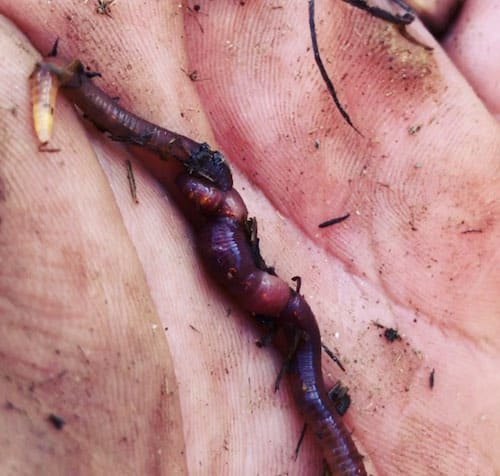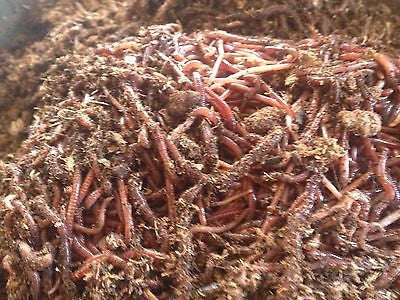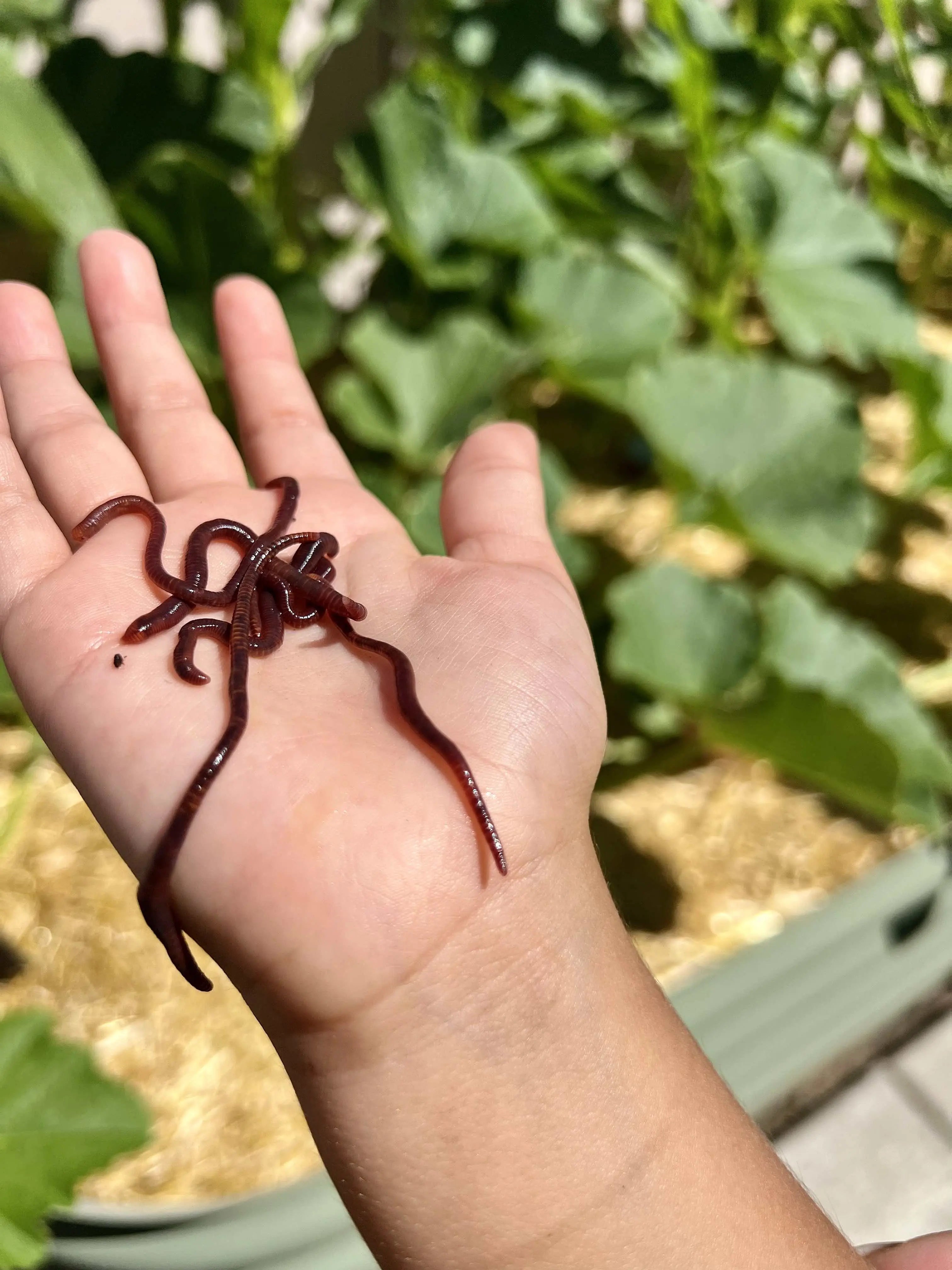Red Wiggler Worms - Natural Service for Environmentally Friendly Composting
Making Best Use Of the Conveniences of Red Wiggler Worms: A Comprehensive Handbook for Home Gardeners and Urban Farmers
In the realm of sustainable gardening techniques, red wiggler worms stand as unrecognized heroes, silently transforming natural waste right into nutrient-rich castings that can work marvels for soil health and wellness. As home garden enthusiasts and metropolitan farmers increasingly seek environmentally friendly and cost-effective ways to boost their gardens, the potential advantages of taking advantage of the power of red wigglers can not be overstated. From minimizing cooking area waste to growing much healthier plants, the use of these modest creatures supplies a myriad of advantages. By exploring the complexities of how to successfully take care of and take full advantage of the benefits of red wiggler worms, individuals can open a wide range of possibilities for enhancing the sustainability and efficiency of their horticulture endeavors.
Recognizing Red Wiggler Worms
Red Wiggler worms, renowned for their efficient composting capabilities, are a species of earthworms widely utilized in vermiculture methods. These worms, scientifically recognized as Eisenia fetida, flourish in rotting natural product, making them perfect candidates for composting (Red Wiggler Worms). Red Wigglers are starved eaters, efficient in consuming their very own weight in organic waste daily. Their gastrointestinal process breaks down raw material into nutrient-rich castings, which are a useful source for enhancing soil and promoting plant growth.
One key attribute of Red Wiggler worms is their reproductive price. These hermaphroditic creatures have both female and male reproductive body organs, permitting them to recreate swiftly under desirable problems. A fully grown Red Wiggler can generate several children in a brief period, making sure a steady populace within a composting system.

Establishing Up a Worm Bin
When establishing a worm bin for vermiculture purposes, correct prep work and focus to information are essential for developing a favorable setting for Red Wiggler worms. Begin by choosing an ideal container for your worm container.

Location the worm bin in a cool, dark area away from direct sunshine and extreme temperatures. On a regular basis check the wetness degrees, adding water if the bed linen feels dry or half-cracked. Feed the worms a balanced diet plan of vegetables and fruit scraps, preventing citrus fruits, onions, and spicy foods. By adhering to these steps, you can establish a flourishing worm bin that will successfully refine natural waste right into nutrient-rich vermicompost for your yard.
Feeding and Maintaining Worms
Guaranteeing a nutritious and balanced diet plan is crucial for the health and productivity of Red Wiggler worms in a vermiculture system. Red Wigglers are voracious eaters, efficient in eating their own body weight in raw material daily. To preserve a flourishing worm populace, it is vital to provide them with a variety of food scraps such as vegetables and fruit peels, coffee premises, tea bags, and crushed eggshells. However, it is very important to avoid feeding them citrus fruits, onions, garlic, milk products, meat, and oily foods as these can be unsafe to the worms or create unpleasant smells in the bin.
Appropriate moisture levels are additionally vital for the well-being of Red Wiggler worms. The bed linen should seem like a wet sponge, providing enough dampness for the worms to take a breath through their skin. Regularly inspect the wetness levels and adjust by adding water or dry bed linen material as needed. Furthermore, keeping appropriate temperature level problems between 55-77 ° F(13-25 ° C )will make sure optimal worm task and reproduction. By vigilantly checking their diet regimen, wetness, and ecological problems, home gardeners and city farmers can maintain a effective and healthy Red Wiggler worm population for composting purposes.
Gathering Worm Spreadings
To successfully extract nutrient-rich worm spreadings from the vermicompost, a systematic harvesting procedure is essential for optimizing the composting benefits. Red Wiggler Worms. The initial step in collecting worm spreadings is to urge the worms to migrate away of the bin. This can be achieved by putting fresh food scraps on one side and leaving the other side undisturbed for a couple of days. When the majority of worms have actually dodged with fresh food, the castings can be collected from the opposite side.
After the castings have been collected, it is vital to separate any type of staying worms from the spreadings to stay clear of harming them during storage space or application. One reliable technique is to create cone-shaped piles of spreadings under brilliant light. Worms will naturally move far from the light, permitting very easy splitting up and removal.
Last but not least, the collected worm castings should be saved in an awesome, dark, and completely dry location to preserve their top quality and effectiveness as a nutrient-rich dirt modification. By adhering to these actions, home gardeners and urban farmers can take full advantage right here of the benefits of red wiggler worms in their vermicomposting systems.
Using Worm Castings in Gardening
The consolidation of nutrient-rich worm spreadings right i was reading this into yard dirt can substantially enhance plant growth and general soil wellness. Worm castings, additionally called vermicast, are an all-natural plant food generated by red wiggler worms as they damage down organic issue. These castings are rich in important nutrients like nitrogen, phosphorus, potassium, and beneficial microorganisms that advertise plant development and enhance dirt framework.
When utilizing worm spreadings in horticulture, it is vital to mix them thoroughly right into the soil or utilize them as a leading dressing around plants. The slow-release nature of worm spreadings guarantees a constant supply of nutrients to plants with time, decreasing the risk of nutrient leaching and promoting lasting soil fertility. Furthermore, worm spreadings help enhance soil aeration, water retention, and microbial task, developing a healthy and balanced setting for plant roots to flourish.

Verdict
In conclusion, the utilization of red wiggler worms in home horticulture and city farming can considerably benefit dirt health and plant development. By comprehending just how to establish up and keep a worm container, feed the worms correctly, and gather their nutrient-rich castings, gardeners can make the most of the advantages of these earthworms.
In the realm of lasting horticulture techniques, red wiggler worms stand as unsung heroes, silently changing organic waste right into nutrient-rich spreadings that can function marvels for soil wellness.When developing a worm container for vermiculture functions, correct prep work and interest to detail are vital for creating a helpful atmosphere for Red Wiggler worms. The initial step in harvesting worm spreadings Discover More Here is to encourage the worms to migrate to one side of the bin. Worm spreadings, also understood as vermicast, are a natural fertilizer produced by red wiggler worms as they damage down natural matter. By recognizing how to set up and keep a worm container, feed the worms effectively, and harvest their nutrient-rich spreadings, garden enthusiasts can make the most of the advantages of these earthworms.